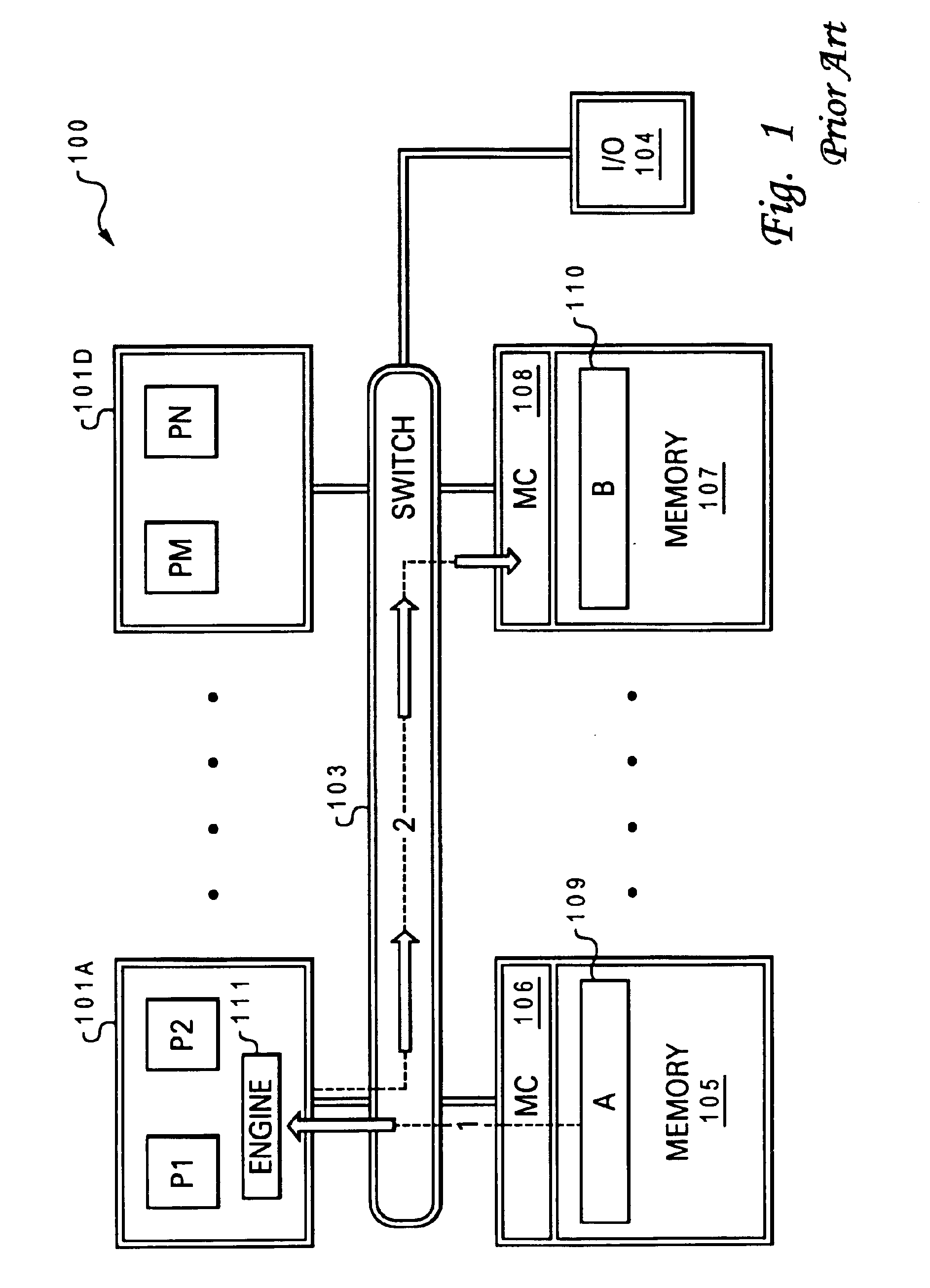Dynamic software accessibility to a microprocessor system with a high speed memory cloner
a microprocessor system and memory cloner technology, applied in the field of data processing systems, can solve problems such as the inability to store shared memory resources, and achieve the effect of balancing performance versus data protection
- Summary
- Abstract
- Description
- Claims
- Application Information
AI Technical Summary
Benefits of technology
Problems solved by technology
Method used
Image
Examples
Embodiment Construction
A. Overview
[0047]The present invention provides a high speed memory cloner associated with a processor (or processor chip) and an efficient method of completing a data clone operation utilizing features provided by the high speed memory cloner. The memory cloner enables the processor to continue processing operations following a request to move data from a first memory location to another without requiring the actual move of the data to be completed.
[0048]The invention introduces an architecturally done state for move operations. The functional features provided by the memory cloner include a naked write operation, advanced coherency operations to support naked writes and direct memory-to-memory data movement, new instructions within the instruction set architecture (e.g., optimized combined instruction set via pipelined issuing of instructions without interrupts), and mode bits for dynamically switching between virtual and real addressing mode for data processing. Additional novel ...
PUM
 Login to View More
Login to View More Abstract
Description
Claims
Application Information
 Login to View More
Login to View More - R&D
- Intellectual Property
- Life Sciences
- Materials
- Tech Scout
- Unparalleled Data Quality
- Higher Quality Content
- 60% Fewer Hallucinations
Browse by: Latest US Patents, China's latest patents, Technical Efficacy Thesaurus, Application Domain, Technology Topic, Popular Technical Reports.
© 2025 PatSnap. All rights reserved.Legal|Privacy policy|Modern Slavery Act Transparency Statement|Sitemap|About US| Contact US: help@patsnap.com



